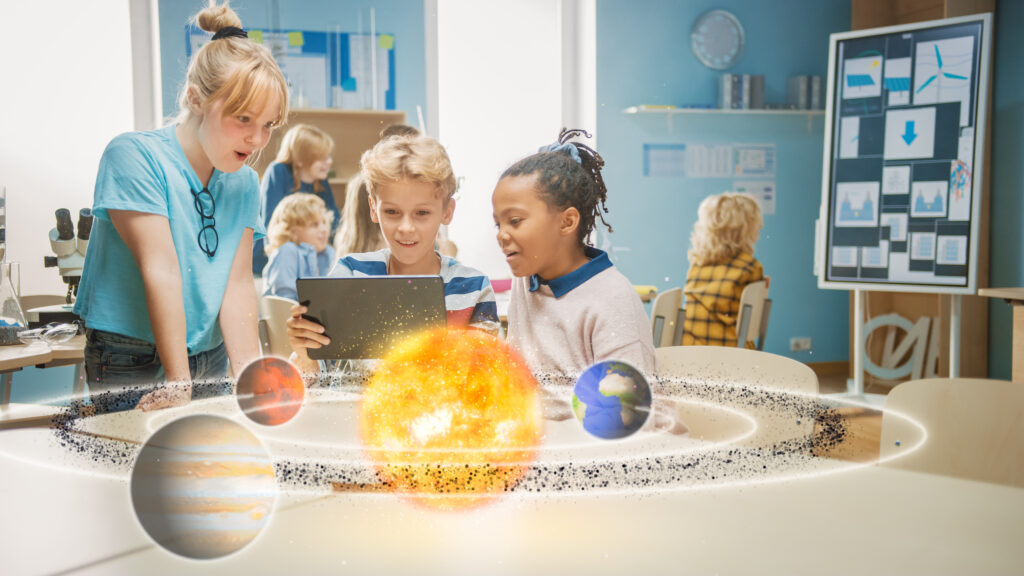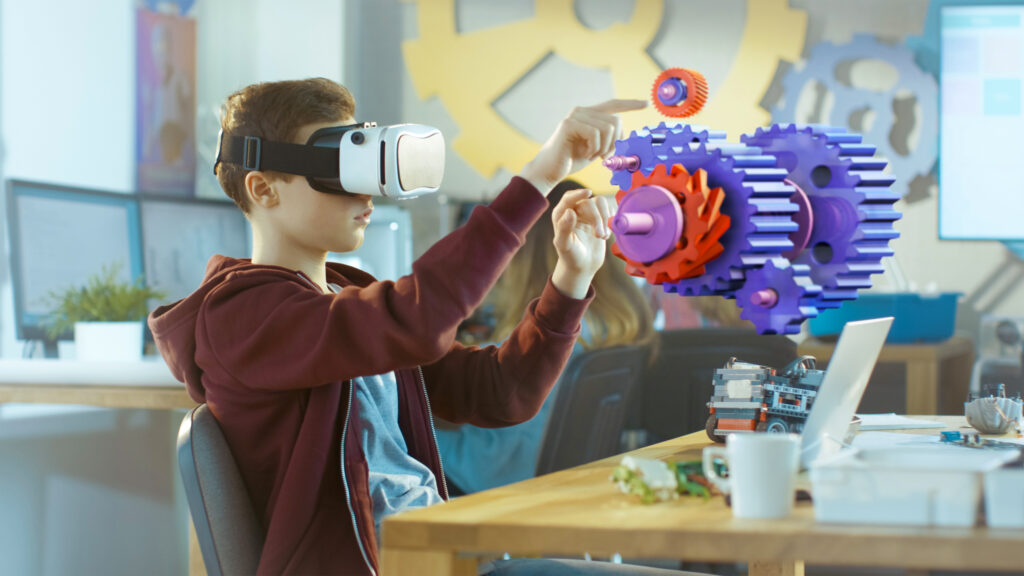Virtual reality (VR) has the potential to transform the way primary school students learn by providing immersive, interactive experiences that bring learning to life. These are a few ways virtual reality might influence primary school curriculum.
Firstly, VR can produce lifelike and captivating simulations that let pupils experience settings and circumstances that might not be possible or safe in the real world. Without leaving the classroom students can, for instance, travel to another nation, visit a museum or historical site virtually, or explore space. This can improve students’ interest and motivation while fostering a deeper understanding of a subject.

Secondly, VR can offer opportunities for interactive, hands-on learning. Students can manipulate and interact with virtual worlds and objects using VR tools and controllers, enabling exploration and experimentation that may not be possible with conventional teaching techniques. This can improve a student’s spatial awareness, cause-and-effect knowledge, and critical thinking and problem-solving abilities.
Thirdly, by enabling students to work at their own pace and receive rapid feedback, VR can facilitate individualised learning. Students can obtain immediate feedback on their performance by using VR simulations and games, enabling them to pinpoint areas where they need to improve, and also to monitor their development over time. This can complement a teacher’s instruction and promote individualised learning strategies, while also assisting students in gaining self-assurance and a growth mentality.

Finally, by enabling students to cooperate in virtual surroundings, VR can foster cooperation and social learning. Students can collaborate on group projects, exchange ideas, and have real-time conversations by using VR. This can facilitate peer-to-peer learning and feedback for students while also fostering cooperation and communication skills.
In conclusion, virtual reality (VR) has the potential to change how primary school students learn by delivering personalised, immersive, and interactive experiences that encourage critical thinking, cooperation, and a deeper level of comprehension. It’s important for educators to think about how VR technology may be used to improve teaching and learning while giving students new possibilities to explore, experiment, and learn as it develops.
Click here to explore what Virtual Reality options are currently available.

